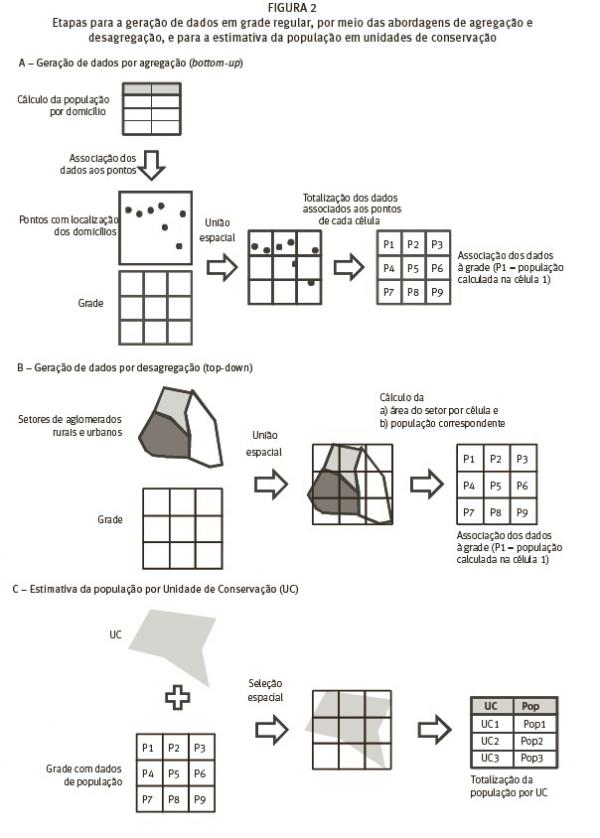Estimativa da população em unidades de conservação na Amazônia Legal brasileira – uma aplicação de grades regulares a partir da Contagem 2007
- Citation:
- D’Antona Á, Bueno M, Dagnino R. Estimativa da população em unidades de conservação na Amazônia Legal brasileira – uma aplicação de grades regulares a partir da Contagem 2007. Revista Brasileira de Estudos de População. 2013;30(2):401-28. copy at www.tinyurl.com/y4cynsan
Abstract:
In this paper a method for increasing the resolution of census data is tested and presented, by aggregating the data onto a regular grid. The methodology consists of (1) the aggregation of households, represented by their geographical coordinates obtained by the 2007 Population Count, carried out by the Brazilian Census Office (IBGE) and, (2) the unbundling of the data by census tracts on the basis of proportionality. The grids obtained were used to estimate the resident population of 114 conservation units in Brazilian Legal Amazon, all of them instituted in or before 2006. The intention was to test this methodology on territorial units that follow neither the official political-administrative boundaries of states and cities, nor the boundaries designed by IBGE for collecting data. The methodology also contributes to the study of populations living in protected areas, due to the scarcity of population estimates in the conservation units. The results showed a population of 325,398 inhabitants in the selected units, 297,693 of whom were in units for Sustainable Use and 27,705 in Permanent Protection units. Adjoining areas have an estimated joint population of 1,020,237. Despite the limitations involved in using the 2007 Population Count, the aggregating of data into grids would seem to be a promising methodology in view of the improvements in IBGE's use of geotechnology. The grid minimizes problems that come up in the use of administrative units or census data and may represent an approach that can be applied usefully in demography and other areas of knowledge.



 CV Lattes
CV Lattes
